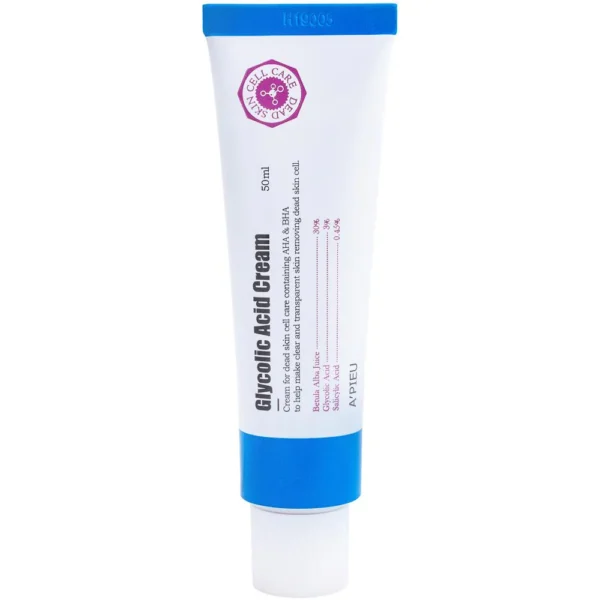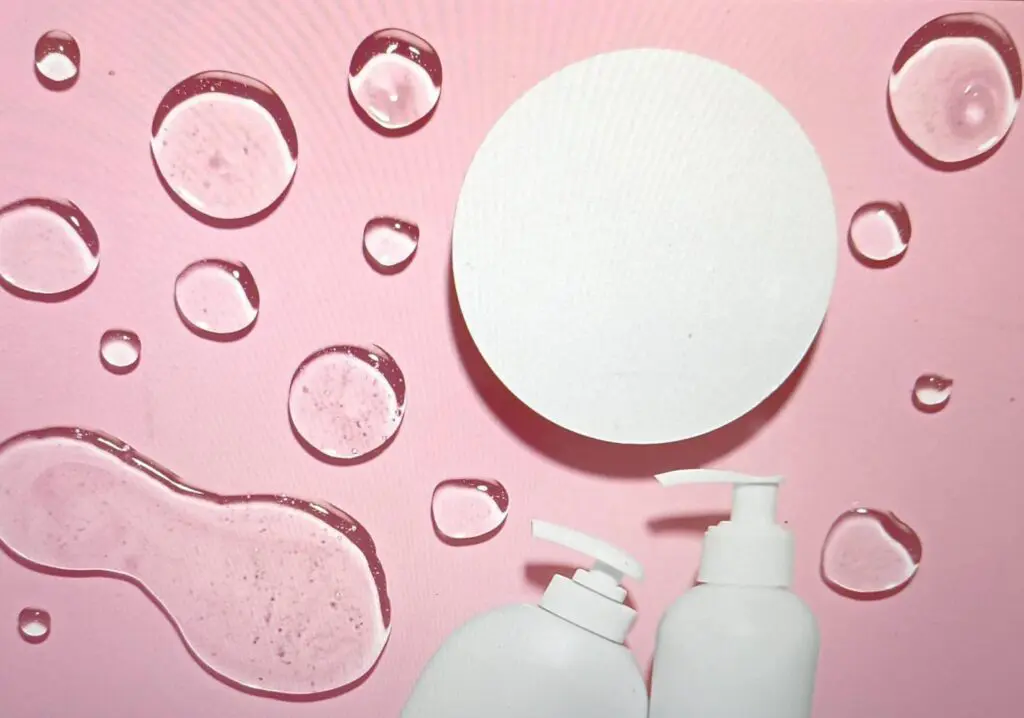
Glycolic Acid in Skincare
Glycolic acid is one of the most popular ingredients in skincare, known for its ability to exfoliate and rejuvenate the skin.
It is a type of alpha-hydroxy acid (AHA) derived from sugar cane, and because of its small molecular size, it penetrates the skin more easily than many other AHAs, making it especially effective.
But while glycolic acid can deliver remarkable benefits, it is important to understand how to use it properly, what skin types benefit from it, and the potential side effects.
In this article, we will explore the benefits, side effects, and proper usage of glycolic acid in skincare.
We will also discuss what ingredients it should not be combined with and why. Let’s dive into the details.
What is Glycolic Acid?
Glycolic acid is a water-soluble AHA that exfoliates the top layers of the skin, removing dead cells to reveal fresher, younger-looking skin underneath.
Since it is derived from sugar cane and fruits, glycolic acid is naturally occurring, but it is most commonly found in skincare products in synthetic form due to its small molecule size and powerful effects.
Glycolic acid works by breaking the bonds between dead skin cells on the surface of the skin, allowing them to slough off more easily.
Unlike mechanical exfoliators, which physically scrub the skin, glycolic acid offers chemical exfoliation, which is typically gentler but still highly effective.
How Does Glycolic Acid Work?
The small molecular size of glycolic acid allows it to penetrate deeply into the skin.
Once it is absorbed, it dissolves the bonds between the outer layers of dead skin cells.
This process is known as exfoliation. As the dead skin cells are shed, the skin appears brighter, smoother, and more even-toned.
But glycolic acid doesn’t just exfoliate.
It also stimulates collagen production. Collagen is the protein responsible for maintaining the skin’s firmness and elasticity, and as we age, our collagen production naturally decreases.
By encouraging collagen production, glycolic acid helps to reduce the appearance of fine lines and wrinkles, giving the skin a more youthful look.
Also Read: Best Glycolic Acid Creams, Serums & Toners in Pakistan
Benefits of Glycolic Acid
1. Smooths Fine Lines and Wrinkles
One of the primary reasons glycolic acid is so loved is its ability to reduce signs of aging, as shown in a study .
As we age, our skin’s natural cell turnover slows down, leading to dullness and wrinkles.
Glycolic acid helps by speeding up this process, allowing new, younger cells to rise to the surface.
In addition to exfoliating, it stimulates collagen production, which firms and smooths the skin, helping to reduce fine lines over time.
Pairing it with other powerful anti-aging ingredients like retinol can further enhance these effects.
2. Fades Dark Spots and Hyperpigmentation
Glycolic acid is often recommended for fading dark spots, acne scars, and sun-damaged skin.
It exfoliates the top layer of the skin where these spots are most visible, allowing newer skin to emerge. This can result in a more even skin tone over time.
Many dermatologists suggest glycolic acid for treating post-acne hyperpigmentation or melasma.
3. Helps with Acne and Clogged Pores
If you struggle with acne, glycolic acid can be a game-changer.
It helps to unclog pores by removing the layer of dead skin cells that often trap oil, dirt, and bacteria.
This makes it effective in preventing breakouts and blackheads. It also reduces excess oil production, which is particularly helpful for those with oily, acne-prone skin.
4. Improves Skin Texture
By promoting exfoliation and increasing cell turnover, glycolic acid improves the overall texture of your skin. It smooths out rough patches and makes the skin feel softer and more refined.
Regular use of glycolic acid can help minimize the appearance of pores and create a more radiant complexion.
How to Use Glycolic Acid
When incorporating glycolic acid into your skincare routine, it is important to start slowly to allow your skin to adjust.
Glycolic acid can be found in various forms, including cleansers, toners, serums, creams, and peels.
The product type and concentration you choose will depend on your skin type and tolerance.
1. Start Low and Slow
If you are new to glycolic acid, begin with a low concentration (around 2-5%) to avoid irritation.
Start by using it 1-2 times a week, then gradually increase usage as your skin builds tolerance.
Over time, you can work up to using glycolic acid more frequently, but daily use is not always necessary or recommended for everyone, especially for those with sensitive skin.
2. Use at Night
Glycolic acid can make your skin more sensitive to the sun, so it is best used in the evening.
If you want to use glycolic acid during the day, you should ask your dermatologist first to assess your skin condition.
3. Apply to Clean Skin
For the best results, apply glycolic acid to clean, dry skin. After cleansing your face, wait a few minutes for your skin to dry completely before applying a glycolic acid product.
You can follow up with a moisturizer to keep your skin hydrated and protected.
4. Avoid Over-Exfoliating
Exfoliation is important for healthy skin, but overdoing it can lead to irritation and damage. Stick to using glycolic acid 2-3 times a week unless your skin is used to it.
Excessive exfoliation can compromise your skin’s barrier, making it more prone to sensitivity and dryness.
Choose the Right Product
Glycolic acid products come in different forms and strengths. Here is how you can use them:
Cleansers: Use a pea-sized amount once or twice daily. These are usually lower in concentration and safe for daily use.
Toners and Serums: Apply a few drops in the evening, starting with once or twice a week. Serums are more potent, so use them cautiously.
Peels: These are stronger treatments and should be used once a week or every other week, depending on your skin’s sensitivity.
Use only one glycolic acid product at a time, like a serum or cream, but not all of them together, including cleansers, toners, and peels
What Should Glycolic Acid Not Be Used With?
When using glycolic acid, it is important to avoid combining it with certain ingredients to prevent irritation and protect your skin’s health.
1. Retinol
Retinol is another powerful ingredient that promotes cell turnover, but using it in conjunction with glycolic acid can be too harsh on the skin.
Both glycolic acid and retinol can cause dryness and sensitivity, especially when used together. If you want to use both, alternate their use on different nights.
2. Vitamin C
Vitamin C is a potent antioxidant and brightening agent, but it is best not to mix it with glycolic acid. The combination can cause irritation. It is better to use vitamin C in your morning routine and glycolic acid at night.
3. Salicylic Acid
Like glycolic acid, salicylic acid is an exfoliant, but it works differently. Salicylic acid penetrates deeper into the pores to combat acne, while glycolic acid exfoliates the surface.
Using both at the same time can cause excessive exfoliation and lead to irritation. Instead, alternate their use if you want to incorporate both into your routine.
4. Benzoyl Peroxide
Benzoyl peroxide is a powerful acne treatment, but it can be drying and irritating, especially when combined with glycolic acid. Mixing the two can lead to redness, peeling, and irritation. It’s best to use them separately.
Side Effects of Glycolic Acid
While glycolic acid can provide many benefits, it can also cause side effects, especially for those with sensitive or dry skin. Common side effects include:
Redness
Irritation
Dryness
Peeling
These side effects are usually mild and temporary but can be minimized by starting with a lower concentration of glycolic acid and gradually increasing use over time. If your skin becomes too irritated, reduce usage or discontinue until your skin heals.
Always make sure to apply a moisturizer suited to your skin type over glycolic acid to reduce its drying effect.
For individuals with extremely sensitive skin, lactic acid may be a gentler alternative. It provides similar exfoliating benefits but is less likely to cause irritation.
Increased Sun Sensitivity
Glycolic acid increases your skin’s sensitivity to the sun, making it more susceptible to sunburn and UV damage.
Always wear sunscreen with at least SPF 30 when using glycolic acid, and consider wearing protective clothing and avoiding direct sun exposure during peak hours.
Final Thoughts on Glycolic Acid
Glycolic acid is a versatile and effective skincare ingredient that can help address a wide range of skin concerns, from acne to aging.
When used properly, it can improve your skin’s texture, tone, and overall appearance.
However, it is important to start slowly, use it at the right time, and avoid combining it with other potent ingredients that could irritate the skin.
With proper care and attention, glycolic acid can be a valuable addition to your skincare routine, helping you achieve smoother, brighter, and healthier skin.
Related:
11 Best Vitamin C Serums In Pakistan
How and When to Use Retinol in Your Skincare Routine

Education: University of Peshawar
Abrar Ahmad holds a Master’s degree in Chemistry and has been writing about skincare for over five years. With a deep understanding of ingredients and their impact on the skin, he enjoys sharing practical, science-based skincare advice. When not writing, he loves playing with his kids.



